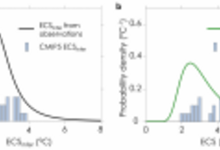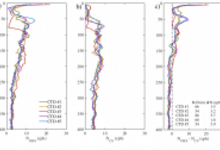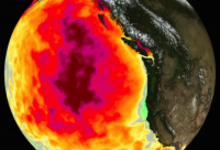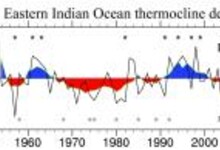Research Highlights
We aim to feature the latest research results from US scientists whose published paper features work that is sponsored by one or more sponsoring agency programs of US CLIVAR (NASA, NOAA, NSF, DOE, ONR). Check out the collection of research highlights below and sort by topic on the right. Interested in submitting an article for consideration? See our Research Highlight Submission Guidelines page for more information.
Approximately seven years of daily-averaged autonomous CO2 observations from NOAA’s Kuroshio Extension Observatory surface mooring were used to close the mixed-layer carbon budget, finding high rates of net community production during the spring bloom period.
Equilibrium climate sensitivity (ECS) — defined as the near-surface air temperature change that would eventually result from a doubling of atmospheric CO2 — is a key metric of climate change. New findings suggest that the value of ECS estimated from global energy budget constraints is actually in agreement with values derived from other methods and simulated by global climate models.
A recent study highlights results obtained from an aircraft ocean survey that targeted a large warm core eddy in the eastern Caribbean Sea, where upper ocean measurements are crucial to understanding the complexities of heat and moisture transfer during the passage of tropical cyclones.
New research shows the extent and development of 'the Blob' using satellite surface temperature data to reveal warm temperature anomalies appearing as early as March 2014 in the central and southern California coast, and eventually extending to the entire West Coast and dissipating in August 2016.
In a new paper from Journal of Climate, researchers show that changes in the Indian Ocean subsurface heat content over the last 50 years can be linked to Pacific Ocean variability associated with the Pacific Decadal Oscillation/Interdecadal Pacific Oscillation.





